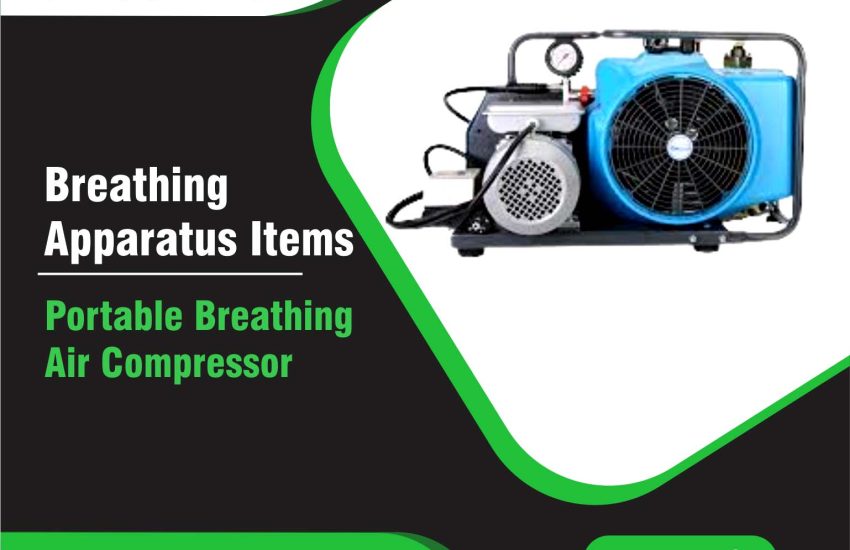Portable Breathing Air Compressor is an essential tool for various industries, including diving, firefighting, industrial work, and emergency services. These compressors provide clean, breathable air to individuals who require a continuous supply of oxygen while working in hazardous environments. In this article, we’ll explore the key specifications, features, and benefits of portable breathing air compressors to help you choose the best one for your needs.
What is a Portable Breathing Air Compressor ?
A portable breathing air compressor is a compact and mobile machine designed to provide compressed air for breathing purposes. It is typically used in applications that require clean, breathable air, such as diving operations, rescue missions, or industrial jobs in environments with poor air quality. These compressors are designed to be portable, allowing users to easily transport and deploy them in different locations.
Key Specifications of a Portable Breathing Air Compressor
When choosing a portable breathing air compressor, understanding its specifications is crucial to ensure it meets your requirements. Below are the key specifications to consider:
1. Airflow Capacity (CFM)
The airflow capacity, measured in cubic feet per minute (CFM), indicates how much air the compressor can deliver per minute. A higher CFM rating generally means the compressor can supply air to multiple users or deliver a higher volume of air to a single user.
- Typical range: 4-20 CFM, depending on the application.
2. Pressure Rating (PSI)
The pressure rating, measured in pounds per square inch (PSI), indicates the maximum pressure at which the compressor can operate. Breathing air compressors typically operate at high pressures to ensure the air is suitable for breathing.
- Typical range: 3000-4500 PSI.
3. Power Source
Portable breathing air compressors can be powered by different sources, including electricity, gasoline, or diesel. Choose a power source based on your location and the availability of resources.
- Electric-powered: Ideal for use in indoor environments or locations with access to electricity.
- Gasoline or diesel-powered: Best for outdoor use, where electricity may not be available.
4. Filtration System
Breathing air compressors must be equipped with a high-quality filtration system to ensure that the air is free from contaminants like oil, dust, and moisture. Some portable compressors feature multi-stage filtration systems, including carbon, oil, and moisture filters.
- Types of filters: Activated carbon filters, particulate filters, and moisture separators.
5. Size and Weight
Since portability is a primary feature, the size and weight of the breathing air compressor are important factors. A lightweight, compact compressor is easier to transport and deploy, especially in challenging environments.
- Typical weight: 30-100 lbs, depending on the model.
6. Duty Cycle
The duty cycle refers to how long the compressor can operate before it requires a break to cool down. A higher duty cycle means the compressor can run for extended periods without interruption.
- Typical duty cycle: 50%-100% continuous operation.
7. Noise Level
Noise level is an important consideration, especially when the compressor is used in confined spaces or for extended periods. Look for models with noise-reducing features to ensure a safer and more comfortable working environment.
- Typical range: 60-85 dB.
Features of a Portable Breathing Air Compressor
1. Easy Mobility and Portability
The primary advantage of a portable breathing air compressor is its mobility. Designed with compact size and lightweight construction, these compressors are easy to transport and set up in various locations.
2. Safety Features
Safety is critical when working with compressed air systems. Many portable breathing air compressors come equipped with automatic shutdown mechanisms in case of system failures, as well as pressure relief valves to prevent over-pressurization.
3. Multiple User Capability
Some portable compressors are designed to supply air to multiple users at once. These models come with multiple outlets, allowing several people to receive clean air simultaneously.
4. Durability and Reliability
Since portable breathing air compressors are used in demanding environments, they are built for durability. Many models feature rugged, heavy-duty construction to withstand harsh conditions, including extreme temperatures, dust, and moisture.
5. Low Maintenance
Portable compressors are designed for easy maintenance, with features like oil-free operation, long-lasting filters, and accessible service points to ensure longevity and ease of upkeep.
Benefits of a Portable Breathing Air Compressor
- Enhanced Safety Portable breathing air compressors provide clean, breathable air to workers in hazardous environments, reducing the risk of respiratory issues and other health problems.
- Versatility These compressors are used across various industries, including construction, firefighting, scuba diving, industrial cleaning, and rescue operations. Their portability makes them highly versatile for different applications.
- Cost-Effective Compared to stationary systems, portable compressors are a more affordable option for businesses that need to provide breathing air on the go. They offer a flexible solution that can be easily transported to different job sites.
- Improved Productivity By ensuring workers have access to breathable air, portable compressors enable them to work longer and more efficiently, especially in confined spaces or remote locations.
Applications of Portable Breathing Air Compressors
Portable breathing air compressors are used in a variety of applications, including:
- Scuba Diving: Used to refill dive tanks and provide air for diving professionals.
- Firefighting: Provides breathable air to firefighters working in smoke-filled or hazardous environments.
- Industrial Work: Used in construction, sandblasting, painting, and other activities where workers are exposed to harmful fumes or contaminants.
- Search and Rescue: Ensures that rescue teams have a continuous supply of breathable air while working in confined spaces or dangerous conditions.
Conclusion
A portable breathing air compressor is an essential piece of equipment for many industries. By understanding the key specifications, features, and benefits, you can make an informed decision about which compressor is best for your needs. Whether you require a portable breathing air system for diving, firefighting, or industrial work, selecting the right model with the appropriate specifications ensures the safety and efficiency of your operations.


